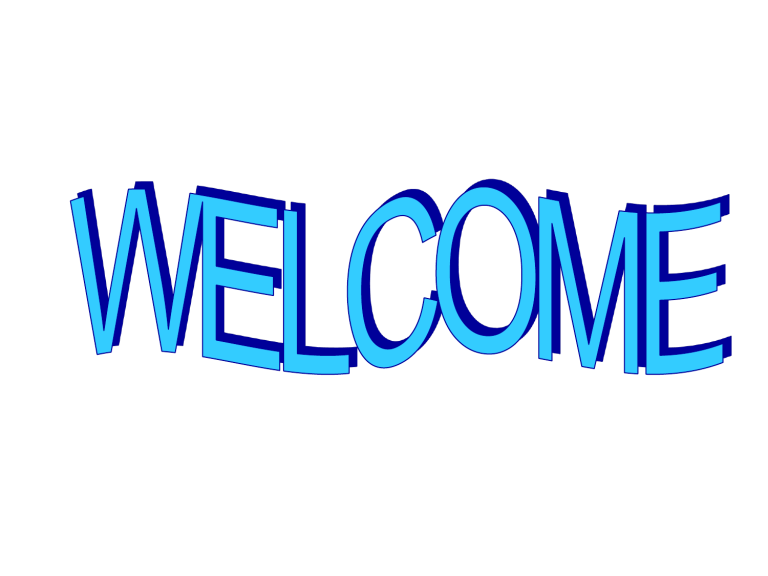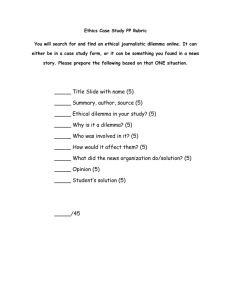Strategic Management & Organizational Health Presentation
advertisement

PREVIEW • Overview of strategic management • Organizational health • Practices of High Performing Knowledge Institutions (HPKI) • Innovations in Organization • Redefining – Identity – Roles – Systems and structures • Action plan for repositioning STRATEGY Large scale future oriented plans for interacting with the environment to optimize organizational objectives STRATEGIC MANAGEMENT • A set of decisions and actions resulting in formulation and implementation of strategies designed to achieve the objectives of the organization ECRITICAL AREAS OF STRATEGIC MANAGEMENT • Determine the mission of the organization, its purpose, philosophy and goals. • Profile the organization, reflecting internal conditions and capabilities. • Assess individual components of external environment. • Identify options for actions on the basis of: – Organizational goals – Internal Factors • Strengths • Weaknesses – External factors • Opportunities • Threats • Evaluate a strategic choice of: – Performance objectives (long term) – Broad action areas – Broad implementation strategy • Formulate annual objectives and short term strategies compatible with strategic choice • Implementation of plans based on: – Resources and their allocation – Matching of tasks, people, structures, technologies and reward systems. • Review and evaluate success of the process and quantum of output BENEFITS OF STRATEGIC MANAGEMENT • Enhance problem prevention capabilities – Encourage involvement of relevant functionaries – Ownership of plans by the implementers • Group based decision most likely to reflect best available option – Alternative generation facilitated by the group – Group members offering better forecast being closer to action centers • Improvement in employee motivation – Better understanding of priorities because of involvement – Appreciation of productivity reward relationship • Gaps and overlaps among individuals/group activities reduced – Clarification of roles – Understanding of delineation of responsibilities • Decrease in resistance to change LIMITATIONS OF STRATEGIC MANAGEMENT PROCESS • Costly process. Lot of time involved • Shirking of responsibilities. (If those involved in strategic management planning are not responsible for implementation • Key persons to be trained to respond to unattained expectations of faculty ORGANIZATIONAL HEALTH Organizational health is a fairly durable set of system properties that tend to transcend short term effectiveness DIMENSIONS OF ORGANIZATIONAL HEALTH • GOAL FOCUS – Clear to all and accepted – Achievable with existing/available resources – Appropriate to demands of environment • COMMUNICATION ADEQUACY – – – – Distortion free Effective with the environment Proper sensing of strains and constraints Access to information with minimum efforts • OPTIMAL POWER EQUILIBRIUM – Relatively equitable distribution of influence – Collaboration rather than coercion – Teams/individuals see interdependent relationships • RESOURCE UTILIZATION – Inputs, specially personnel are used effectively • COHESIVENESS – Identity known – Vision shared – Members want to stay, influence and be influenced • MORALE – Individual sentiments centering around a feeling of belonging • INNOVATIVENESS – New procedures, goals, products, diversification – Grow, develop, change rather than being in a routine • AUTONOMY – Independence from environment – Treating other’s response as a determining factor of our own behavior – Not being passive to demands of environment • ADAPTATION – Be in effective contact with the environment – Evolve a restructuring approach to cater for change • PROBLEM SOLVING ADEQUACY – Structures procedures for sensing problems – Generating options and implementing solutions – Coping process more important than problems FACTORS INFLUENCING ORGANIZATIONAL CAPACITY • • • • COMPETENCY MATERIAL RESOURCES RELATIONSHIPS LEARNING • LEAD TO THE ABILITY TO PERCEIVE CHANGES AND ADAPT MOVING THE ORGANIZATION TOWARDS GREATER MATURITY • CRISIS – Not an emergency situation – Results from a constellation of forces which constantly influence an organization • DILEMMA – Crisis leads to dilemma – It is not a problem to be solved once and for all • STAGES OF CRISIS – – – – – Birth Identity Growth Maturity Development CRISIS IN THE LIFE OF AN ORGANIZATION • BIRTH – CHARACTERSTICS • Few individuals full of zeal. Attention oriented. Outward power points. – DILEMMA • Size of the organization. Planning for every contingency – RESOLUTION • Strong leadership • IDENTITY – CHARACTERSTICS • Search for main focus. Internal competition for attention. Few activities belittle others – DILEMMA • Image for perfection. Conformity versus differences. Fast and slow starters – RESOLUTION • Explicit long range objectives. Prioritize. Focus to enhance momentum of lagging functions • GROWTH – CHARACTERSTICS • Increased demand for services. Too much load at the cost of stability – DILEMMA • Consolidate and progress or expand in all promising areas – RESOLUTION • Periodic assessment of objectives and priorities • MATURITY – CHARACTERSTICS • Inter and intra organizational differences/rivalries – DILEMMA • Forego identity and submit to dissent or break away – RESOLUTION • Develop task based interdependent relationships • DEVELOPMENT – CHARACTERSTICS • Self satisfaction. Tendency to rest on laurels. Reluctance for change – DILEMMA • Fossilize or break up into progressive and conservative groups – RESOLUTION • Build indices of relevance and rejuvenate the organization WHY ORGANIZATIONS FAIL TO FOLLOW SUCCESSFUL PRACTICES • LACK OF COMPULSION TO INNOVATE – To sustain ones own strength • LACK OF ENTREPRENEURIAL ENERGY OF THE LEADER • STANDARDS AND EXPECTATIONS OF FOUNDERS – Mismatch with internal resources and constraints • BIRTH DEFECTS – Improper launch practices LAUNCH PRACTICES OF HIGH PERFORMING KNOWLEDGE INSTITUTIONS • GOVERNANCE STRUCTURE – Interested, respected and autonomous board – Members from cross section of stake holders – Important in deciding relationship with and standing in the environment • CRITICAL LINKAGES – Government – Funding institutions – Other knowledge institutions • COMPLETELY AUTONOMOUS, CLIENT SERVICE PROVIDER TYPE – OR • CONTROLLED BY PROMOTERS – OR • PROMOTED BY GOVT BUT ACQUIRES AUTONOMOUS STATUS AND ENJOYS NURTURE RELATIONSHIP – Relationship based on autonomy, equality and mutual collaboration rather than on hierarchy and or dependency • TRADITION OF OPERATING LEADERSHIP – Recruitment through open search – Stable and reasonable tenure, broad mandate and operational freedom – Leaving a stamp by shaping organizational culture – Viewing leadership role as a lifetime work – Functioning as a reflective practitioner, learning on the job – Build and nurture relationships • FUNDING AND RESOURCE GENERATION STRATEGIES – Develop capacity for resource generation in the initial honeymoon period – Think of future sustainability while guarding autonomy and mission sanctity • MANAGING THE LAUNCH BEST OPERATING PRACTICES OF HIGH PERFORMANCE KNOWLEDGE INSTITUTIONS FORCES THAT STIMULATE ORGANIZATIONAL INNOVATIVENESS • TURBULENT OPERATING ENVIRONMENT – Changes in client needs – Changes in client expectations – Shift in donor focus • VULNERABILITY – Competition – Size – Resources SOME THOUGHTS ON REPOSITIONING OF HPKI • INTERNAL FACTORS – Organizational identity • Mission, long term objectives and short term plans • Perspective plan – Portfolio of Offerings • • • • • • • • • • Too much emphais on tradition Too much emphaisi on training Standard offerings to meet non standard needs Diversity in product mix Sensing market development Staff Availability of Generalists – Specialists Retraining Reward system Tenure – Systems and Structures • Flexibility, scope for experimentation • Hierarchy versus matrix • Capacity augmentation through linkages • EXTERNAL FACTORS – Sponsors’ priorities and funding sources • • • • More towards integrated approach Transition from general to specifics No free lunch approach Diverse but demanding sources – State policies • • • • Support not taken for granted Emphaisis on micro enterprises Thrust on Key Business Areas Thrust on enhancing competitiveness – New markets • Education system • Regional competitors • Existing entrepreneurs and family business • Client expectations – Integrated support: concept to completion – Wanting solutions and not just training – Measurable results • Opportunity mapping and Change – – – – Need for and direction of change Redefining identity, mission and perspective plan Portfolio offerings Human resources, linkages, structures and …….. ………………………………………………….……..
